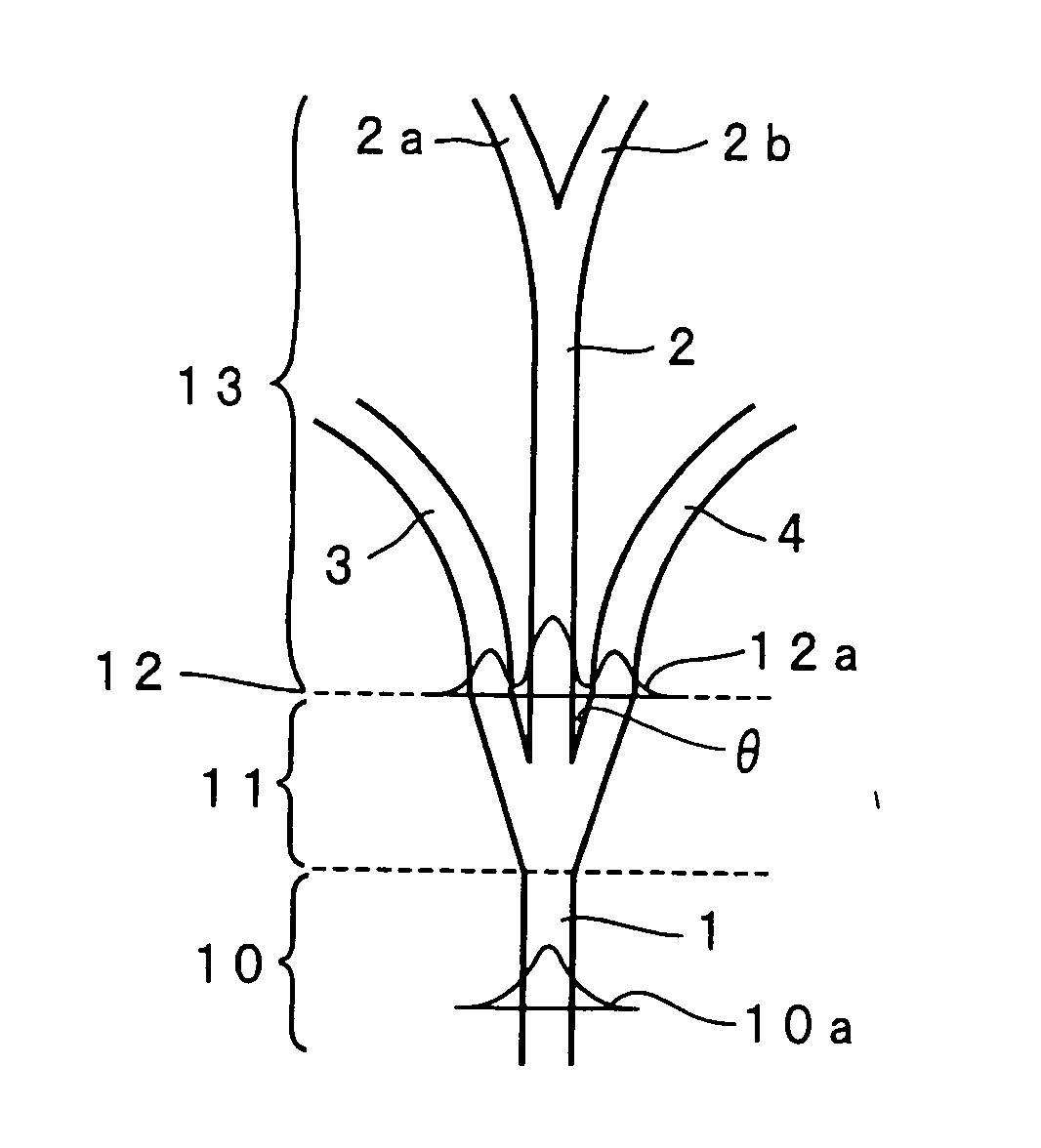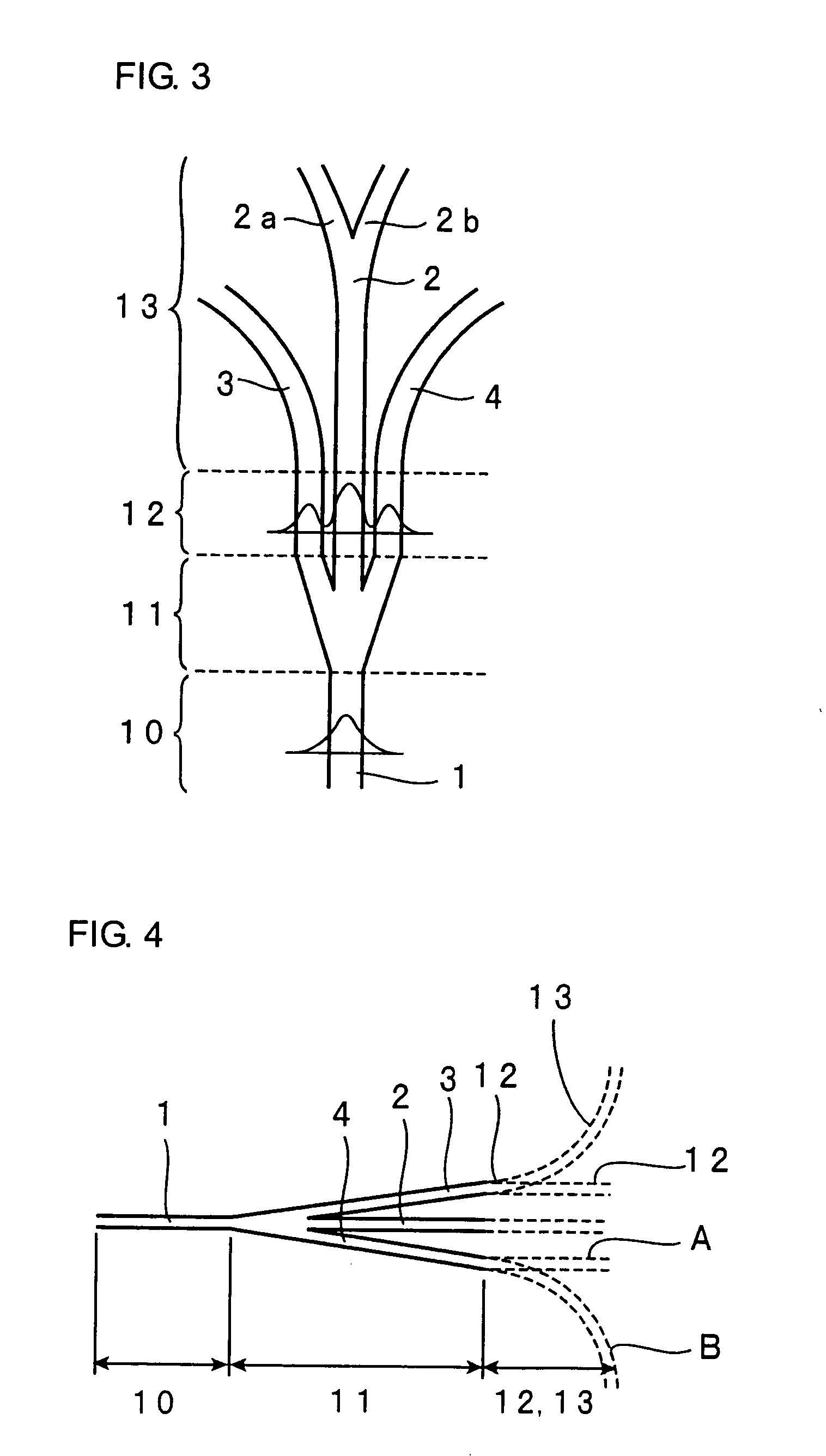Optical branch device and optical coupler module
a branch device and optical coupler technology, applied in the field of optical branch devices, can solve the problems of large insertion loss, unfavorable generation of long 4-branched waveguide devices, and inability to produce devices of uniform quality with a high yield, and achieve the effect of high productivity and uniform quality
- Summary
- Abstract
- Description
- Claims
- Application Information
AI Technical Summary
Benefits of technology
Problems solved by technology
Method used
Image
Examples
Embodiment Construction
[0065] The present invention will be described by way of examples thereof hereinafter. However, the invention is not limited to the following examples, and can be carried out with any appropriate modification as long as the subject matter of the invention is not changed.
[0066]FIG. 1 is a plan view illustrating a waveguide of an optical branch device of an example according to the present invention. The waveguide of the optical branch device of the present example is composed of a basic portion 10, a branch portion 11, a parallel portion 12, and a divergent portion 13. In the branch portion 11, three branch waveguides, that is, a first branch waveguide 2, a second branch waveguide 3 and a third branch waveguide 4 are branched from a waveguide 1 in the basic portion 10. The first branch waveguide 2 is linearly extended continuously from the waveguide 1. The second branch waveguide 3 and the third branch waveguide 4 are formed in such a manner that the first branch waveguide 2 is inte...
PUM
 Login to View More
Login to View More Abstract
Description
Claims
Application Information
 Login to View More
Login to View More - R&D
- Intellectual Property
- Life Sciences
- Materials
- Tech Scout
- Unparalleled Data Quality
- Higher Quality Content
- 60% Fewer Hallucinations
Browse by: Latest US Patents, China's latest patents, Technical Efficacy Thesaurus, Application Domain, Technology Topic, Popular Technical Reports.
© 2025 PatSnap. All rights reserved.Legal|Privacy policy|Modern Slavery Act Transparency Statement|Sitemap|About US| Contact US: help@patsnap.com



